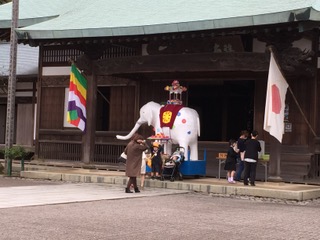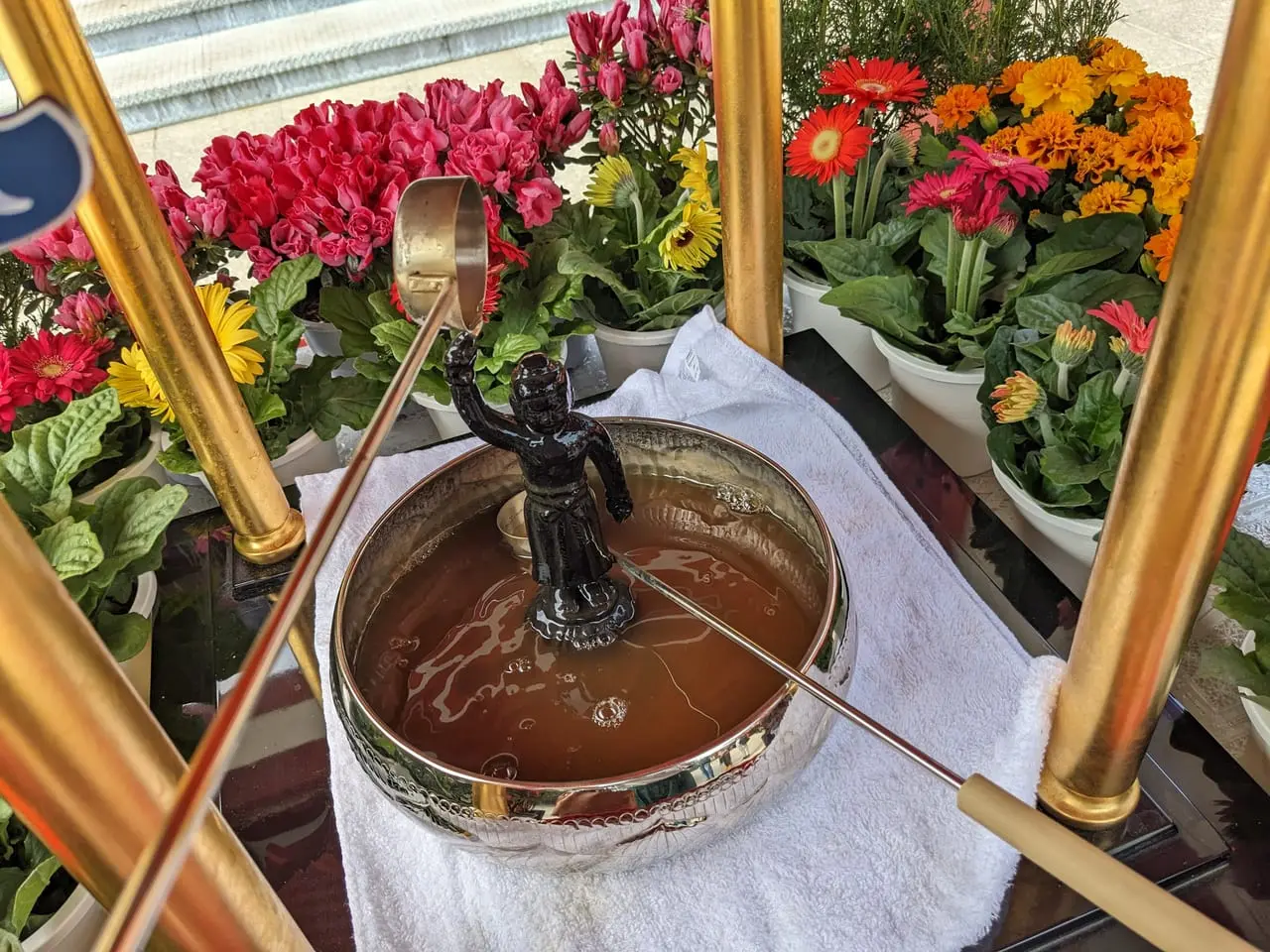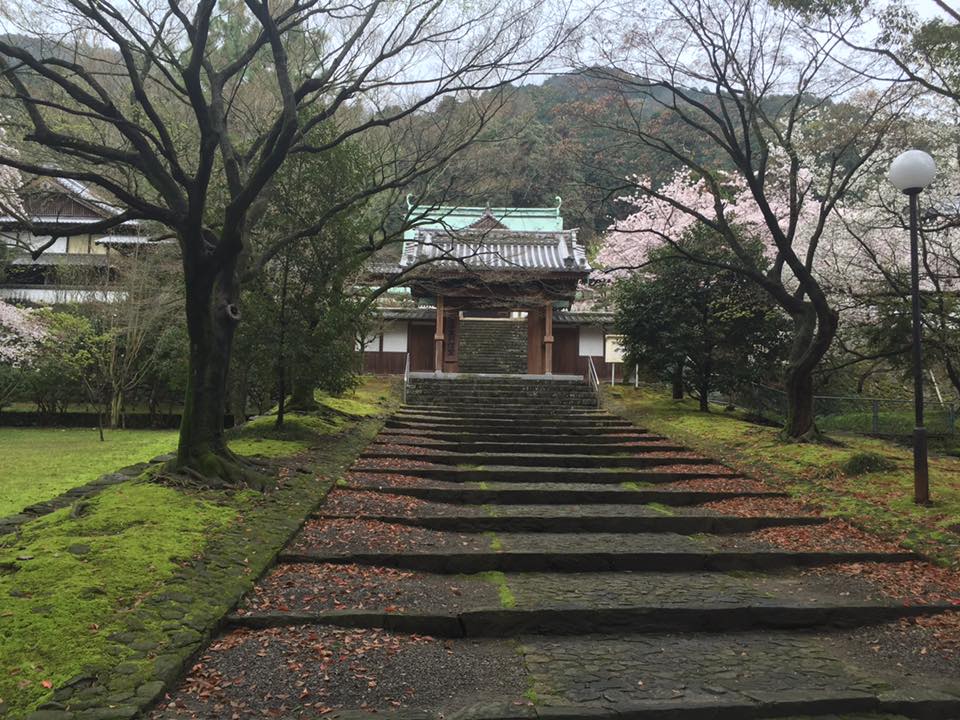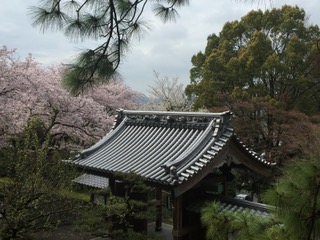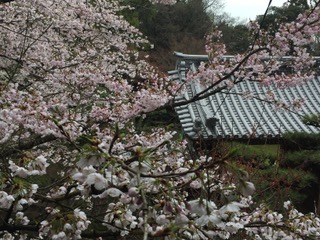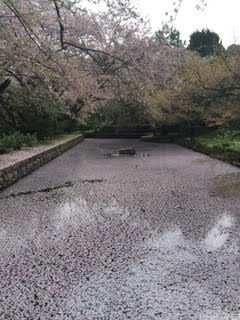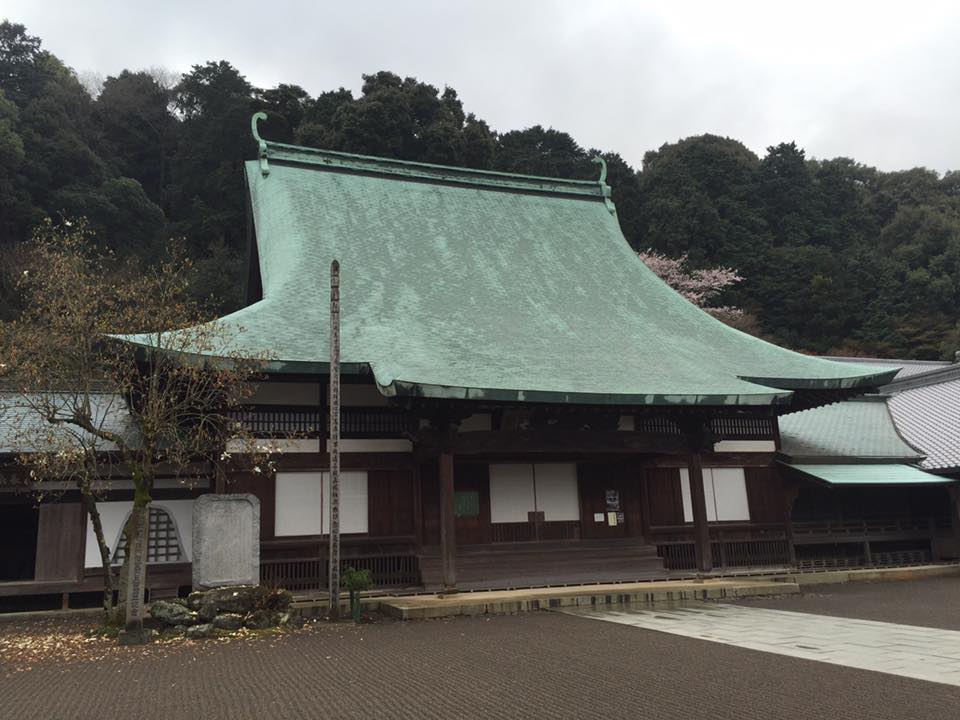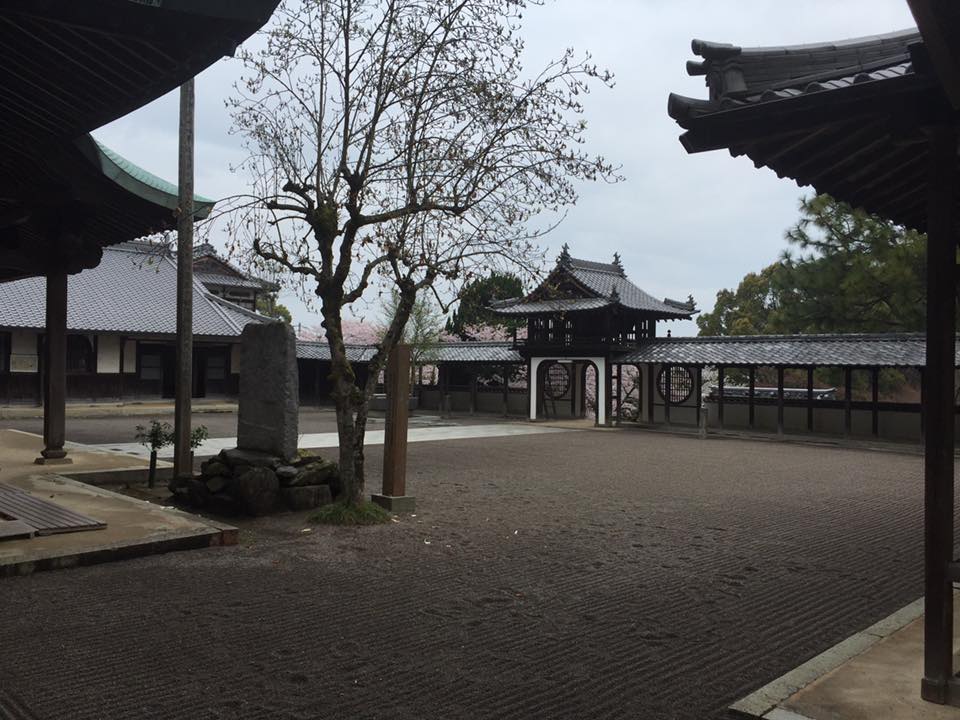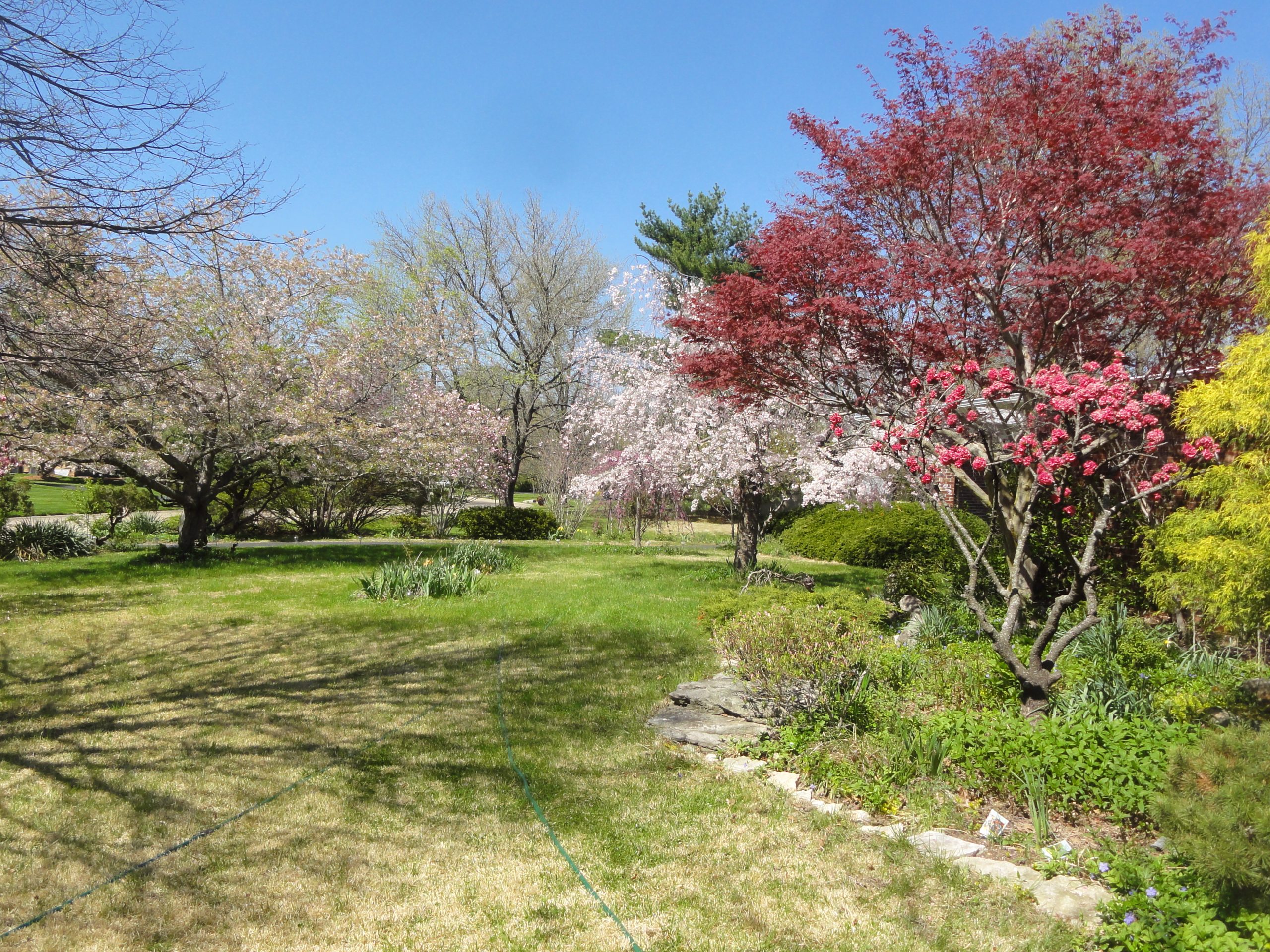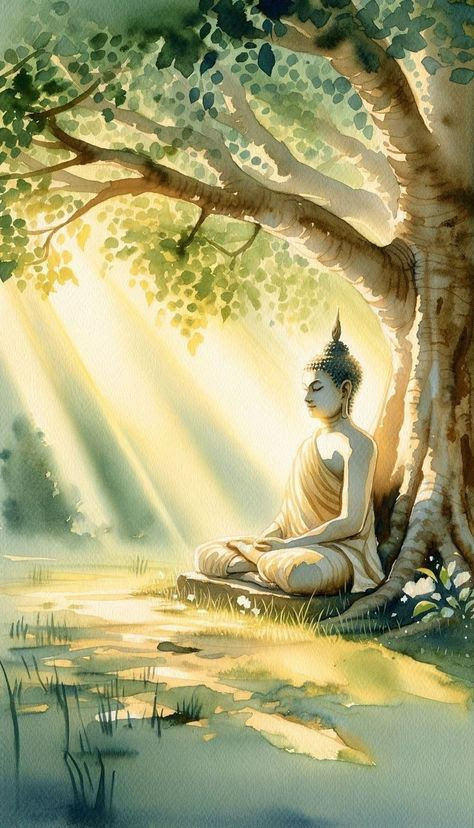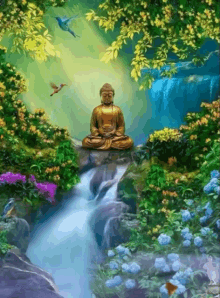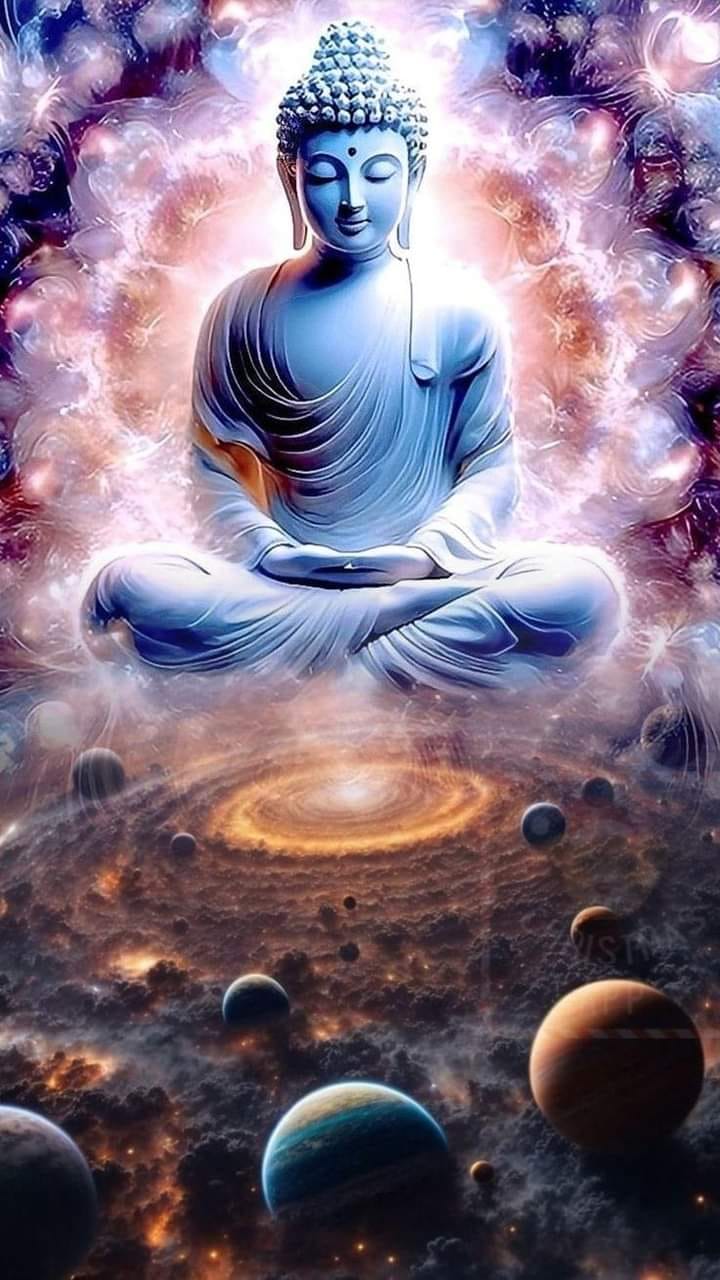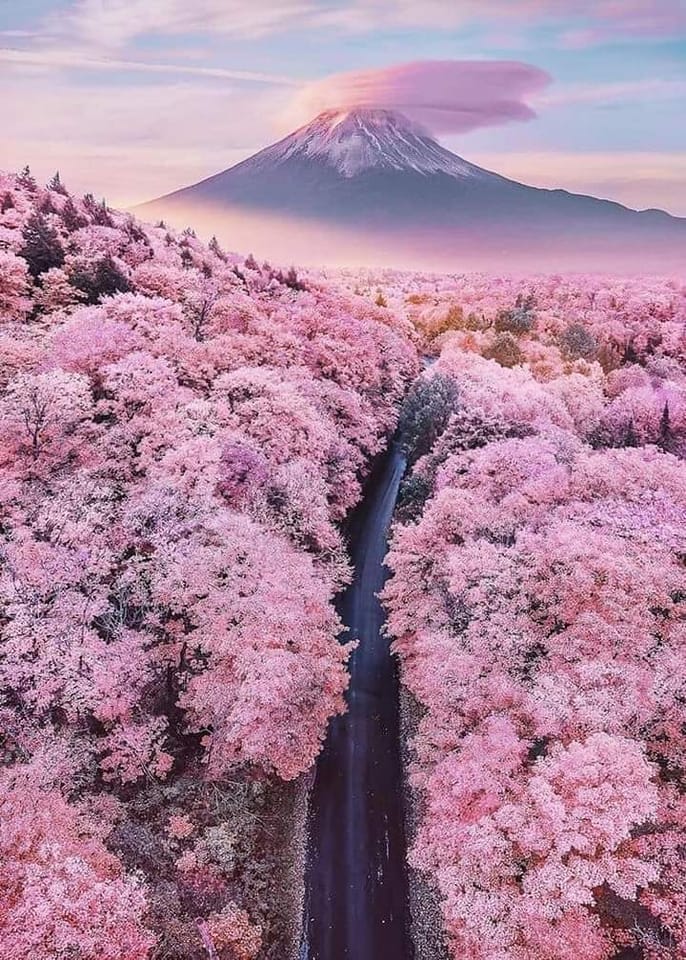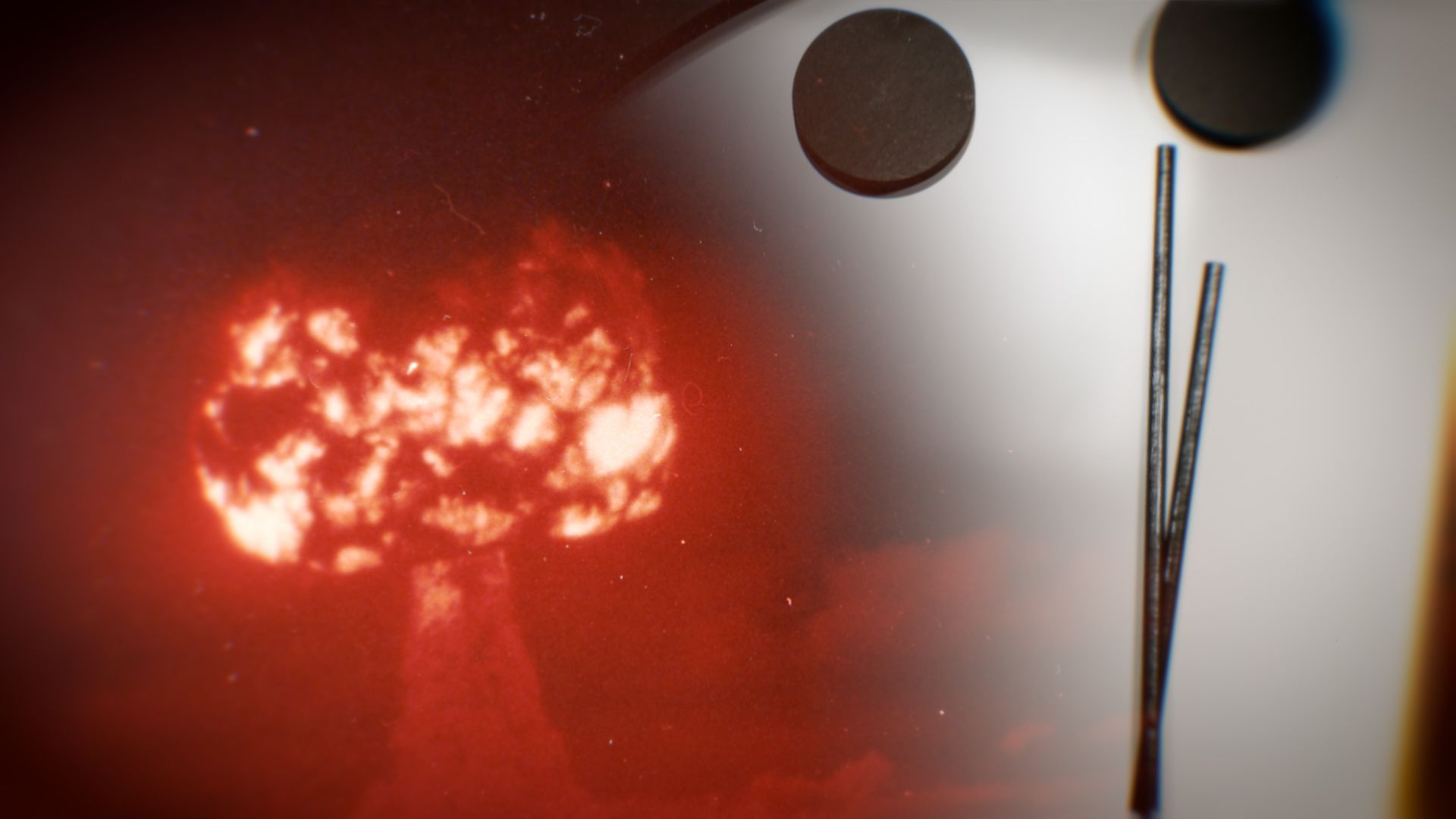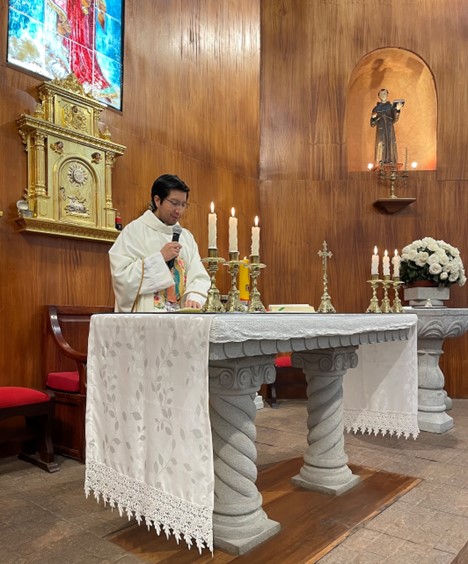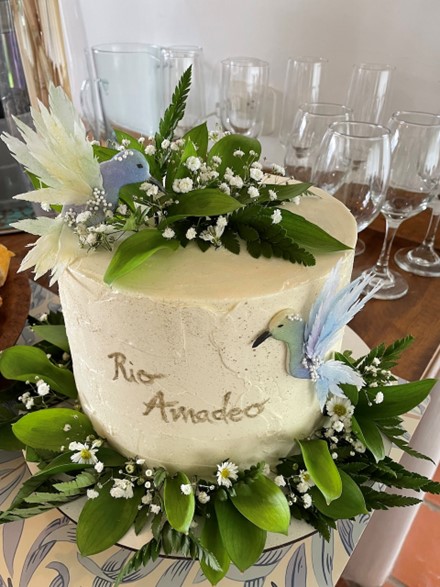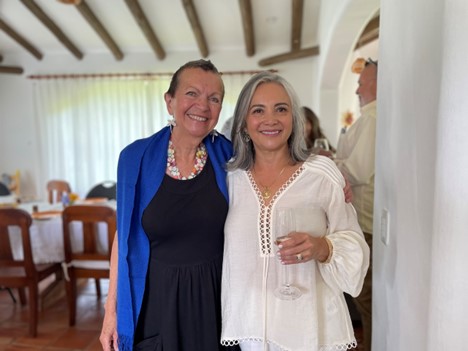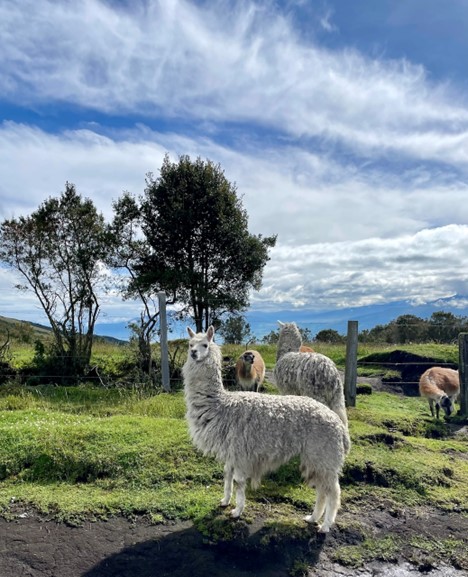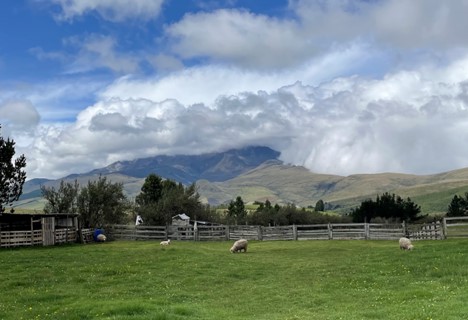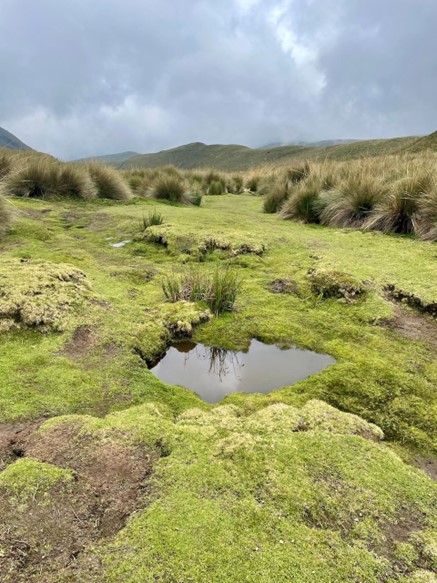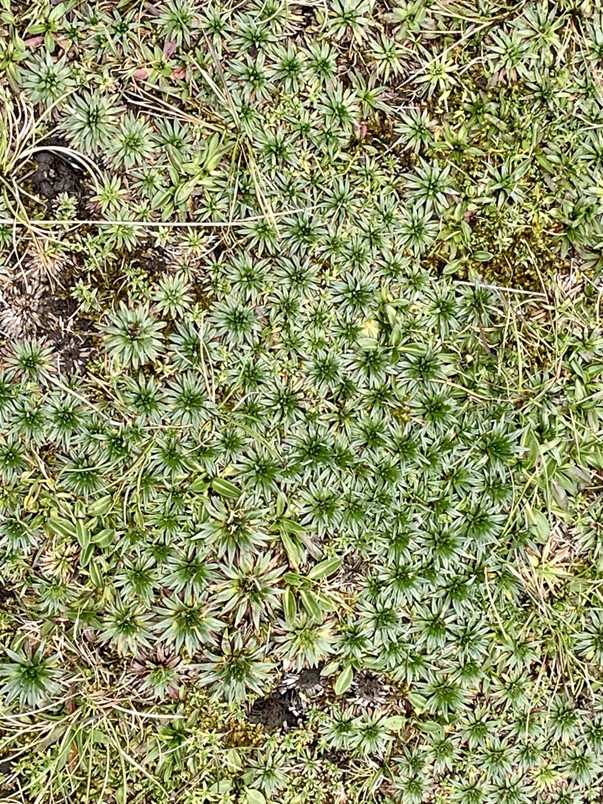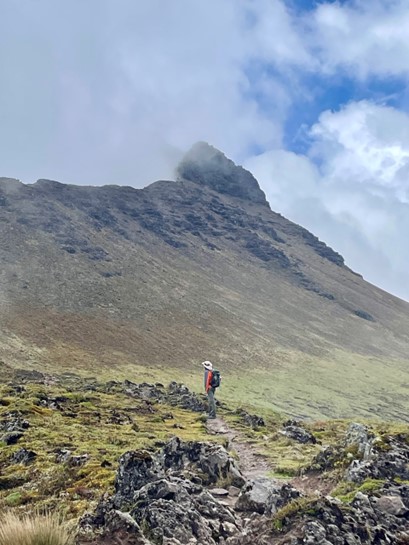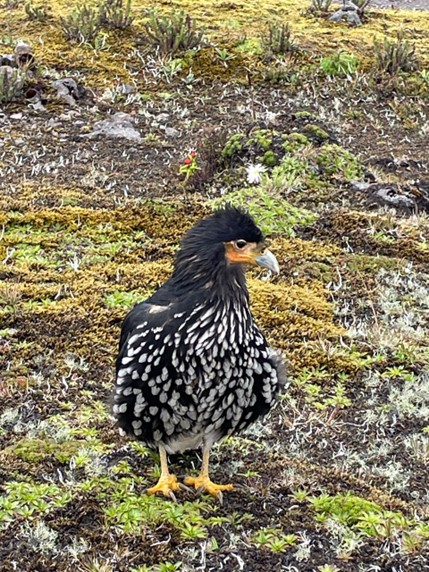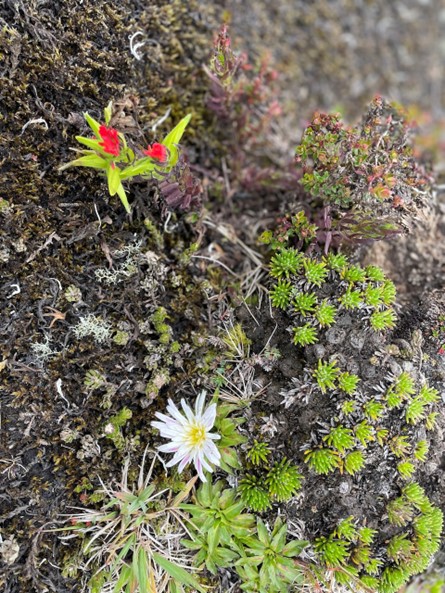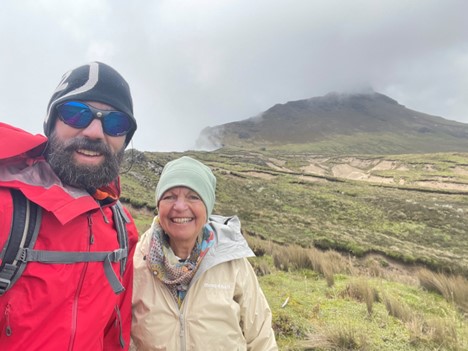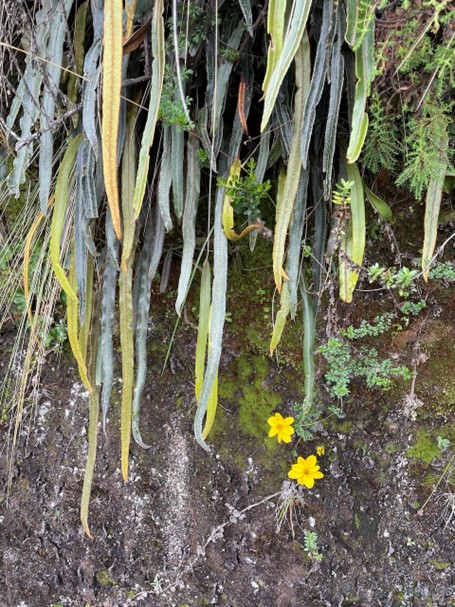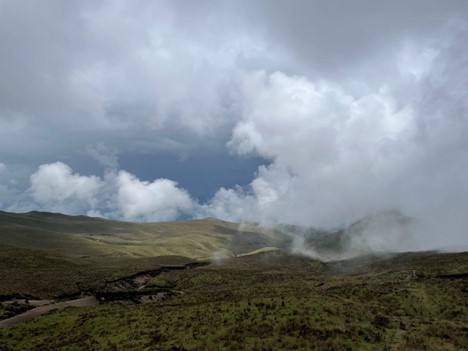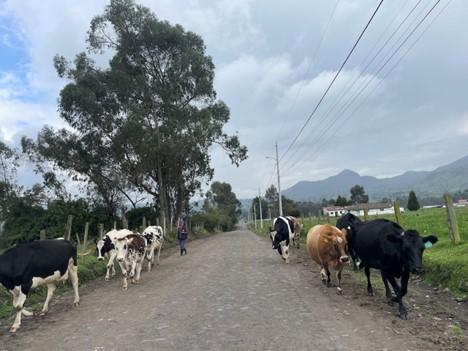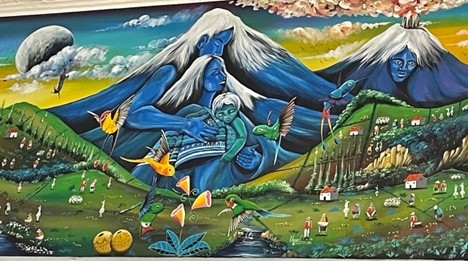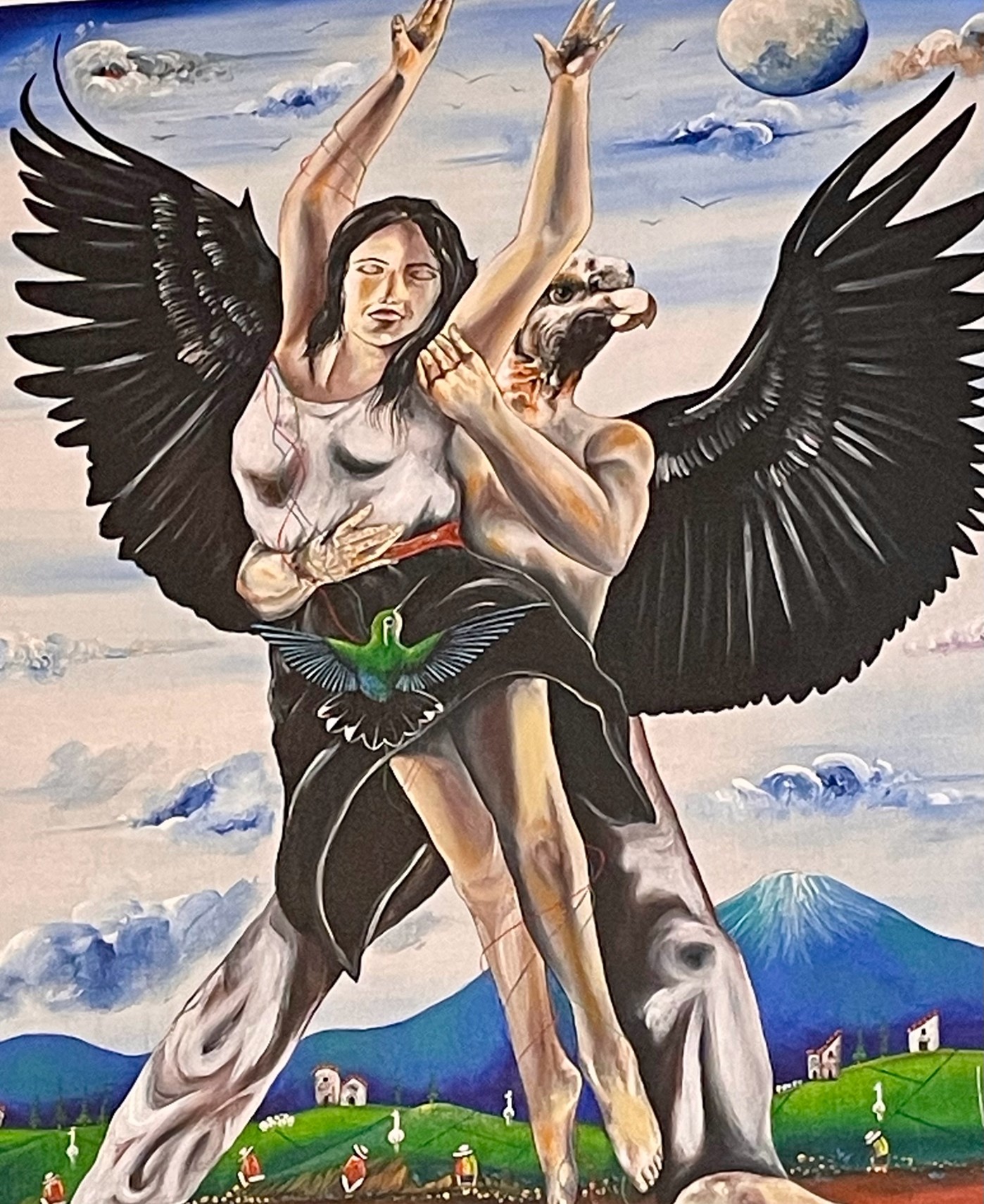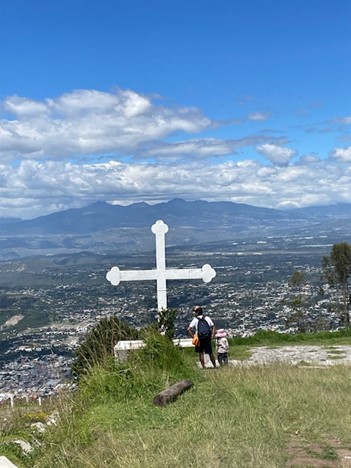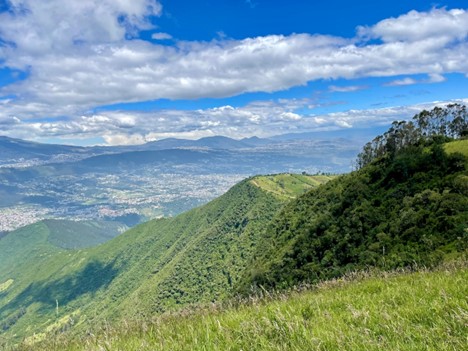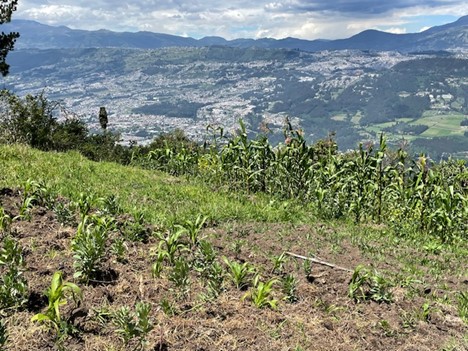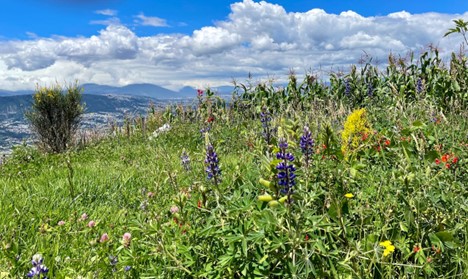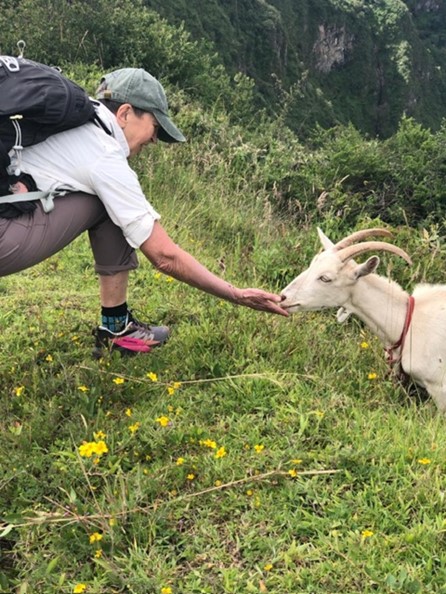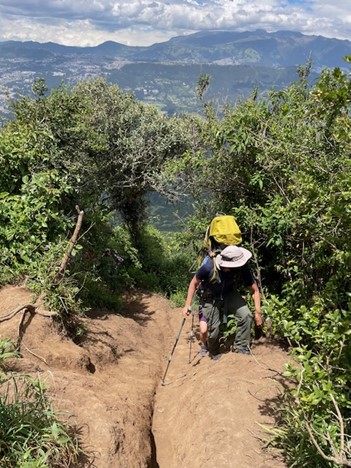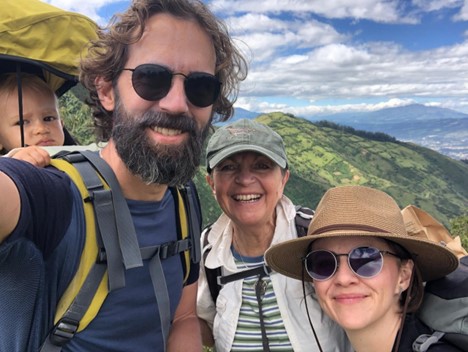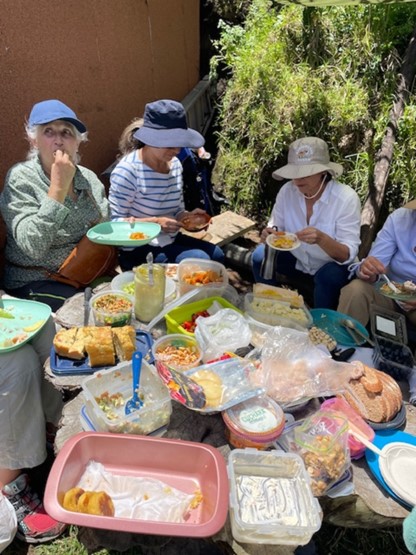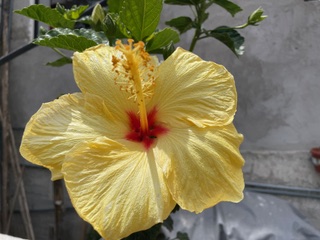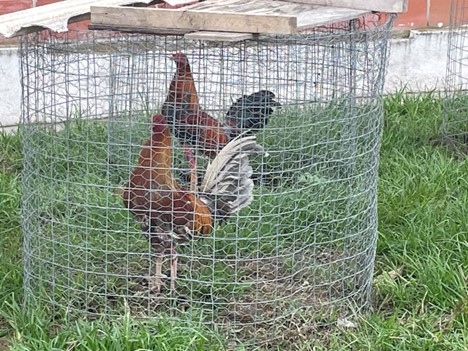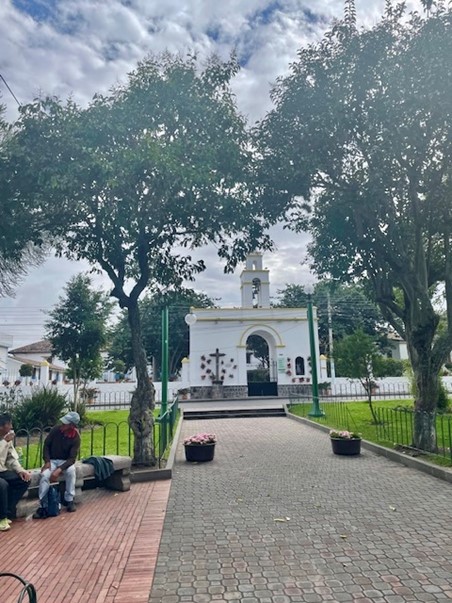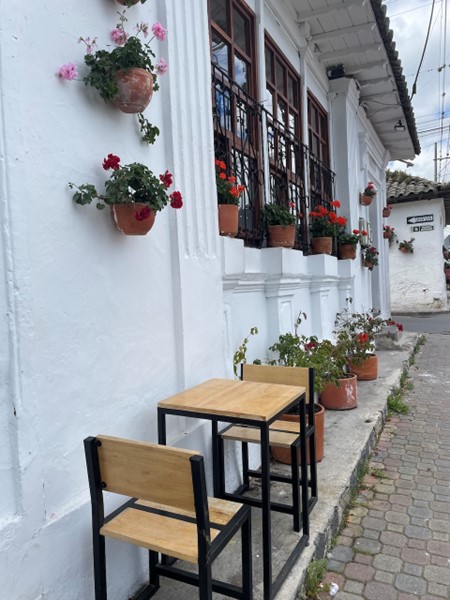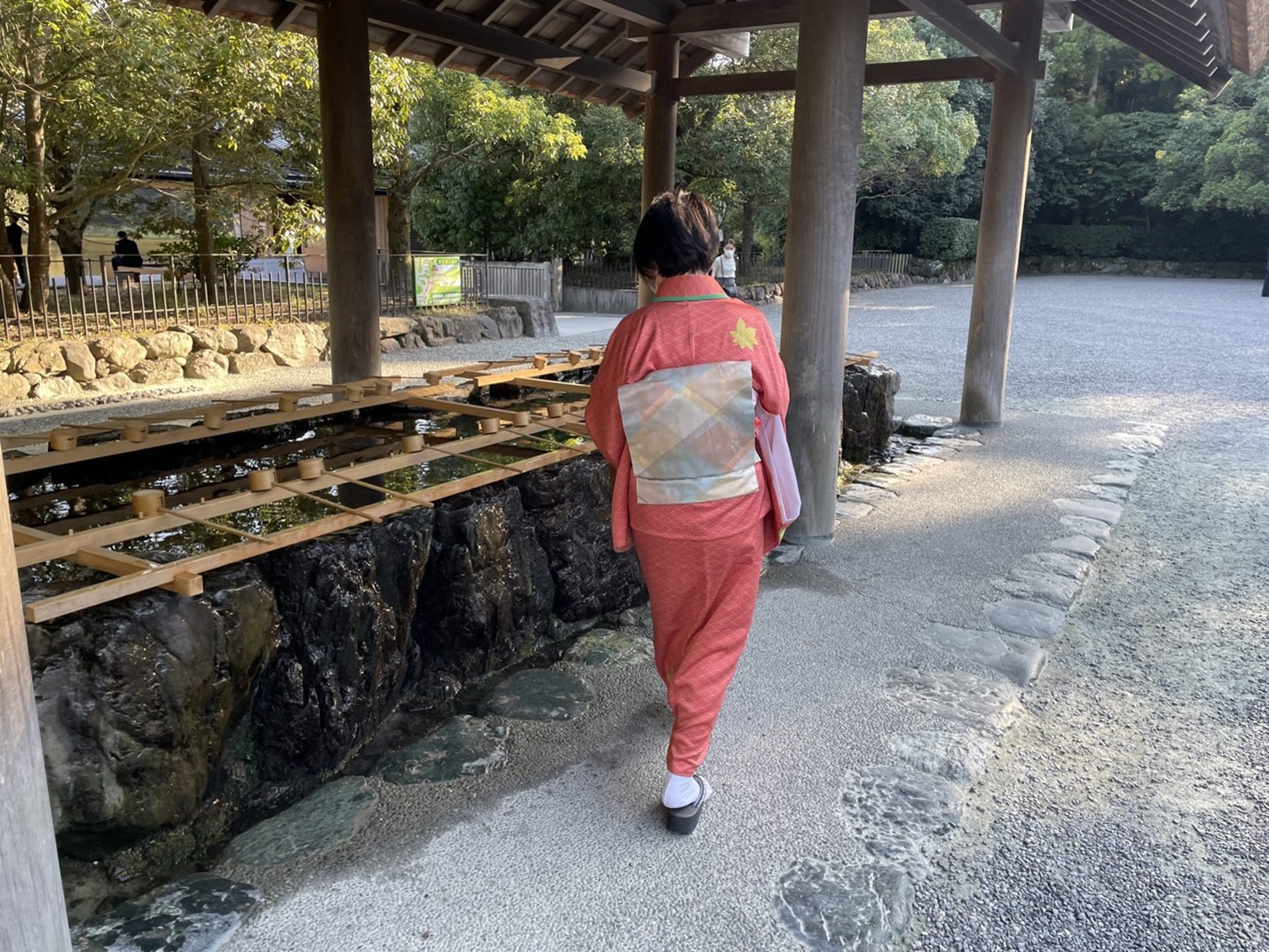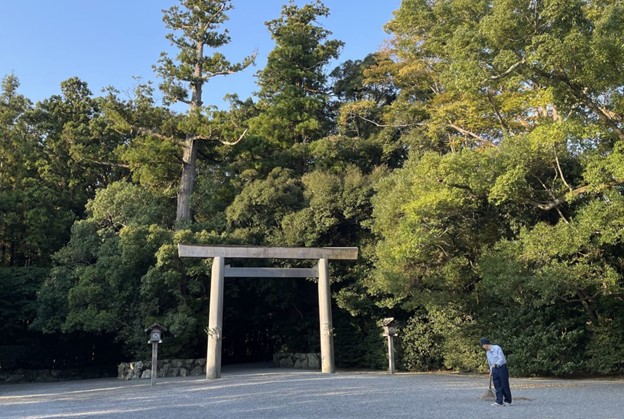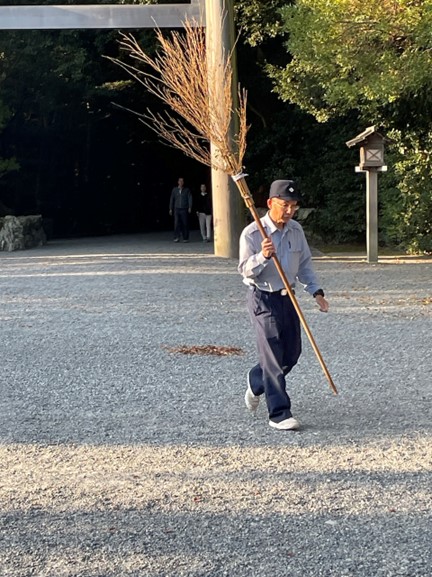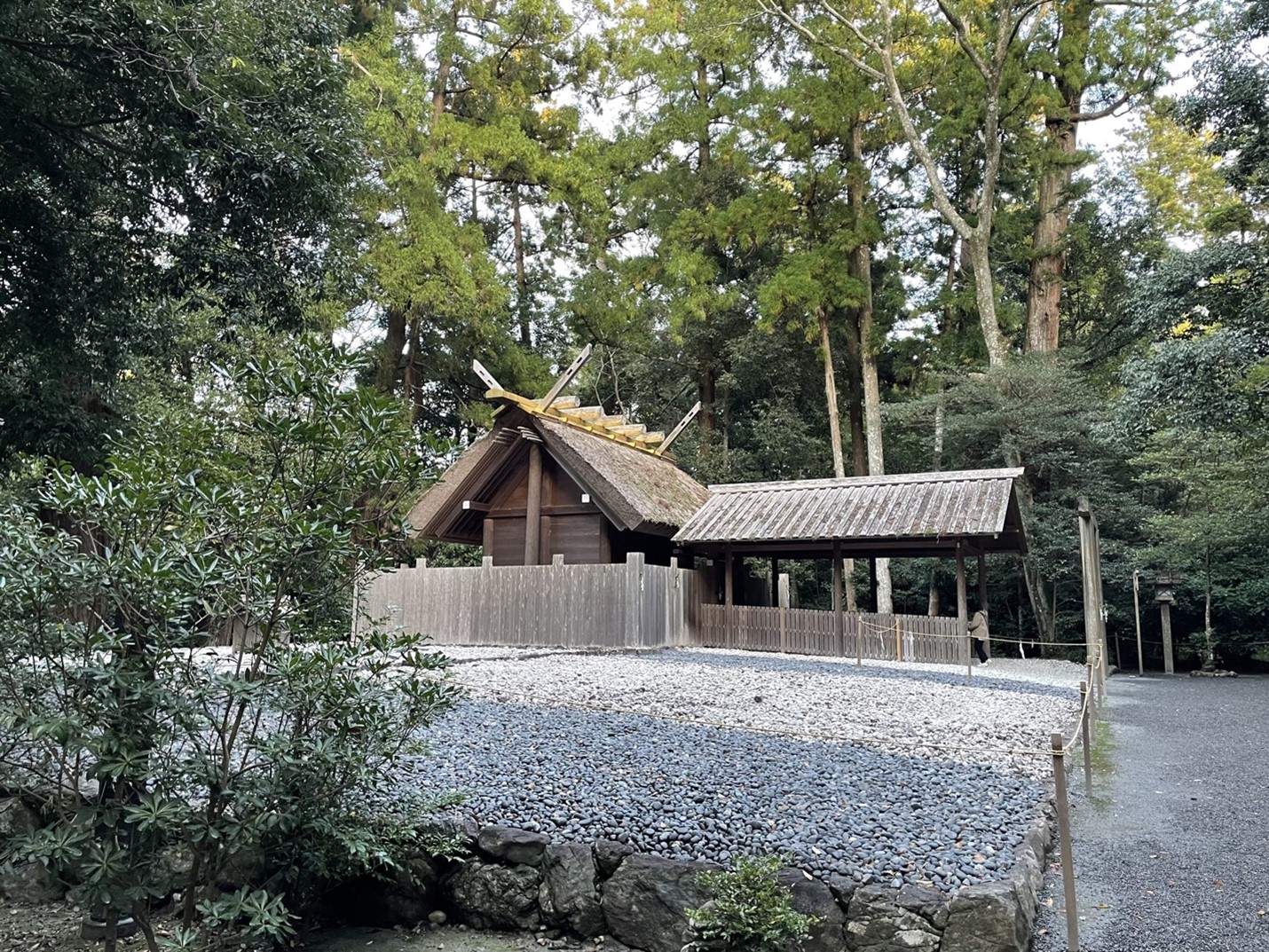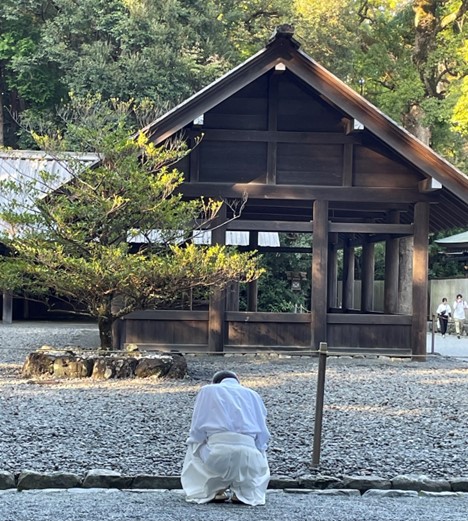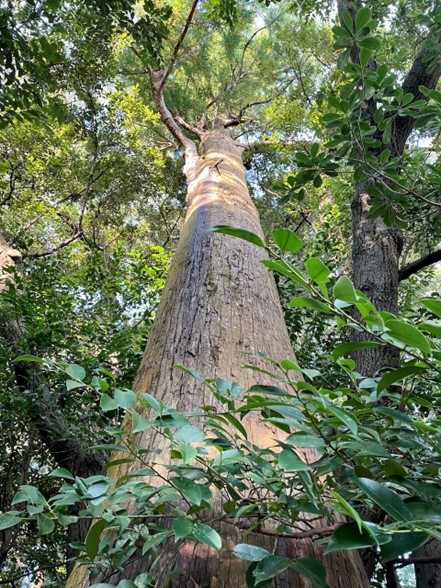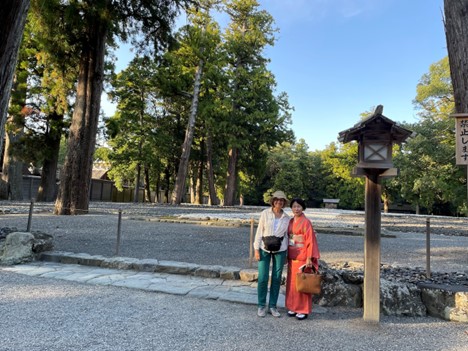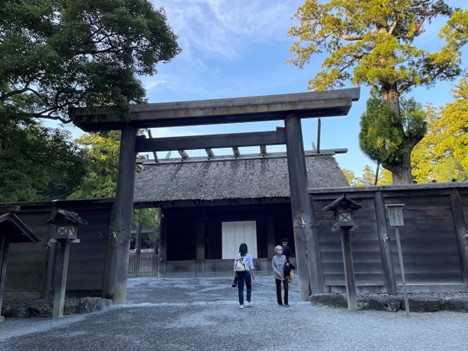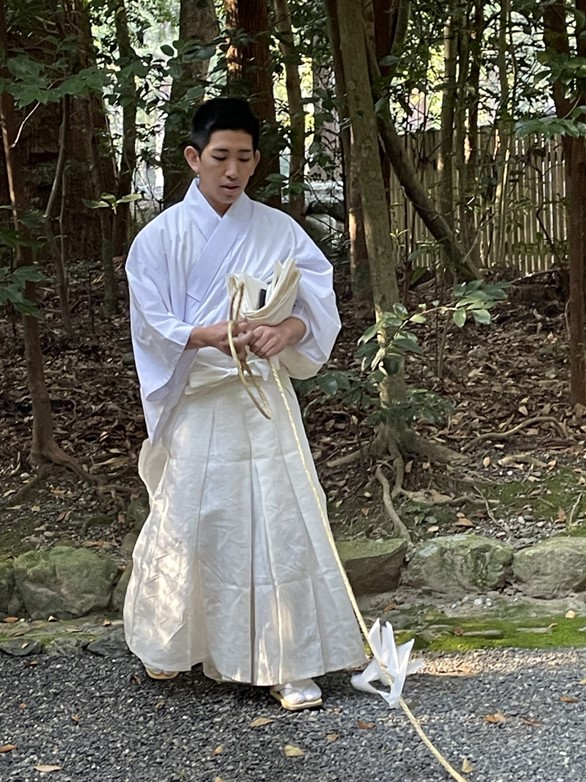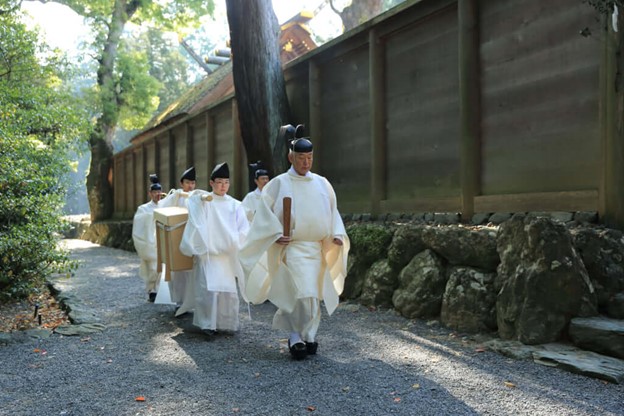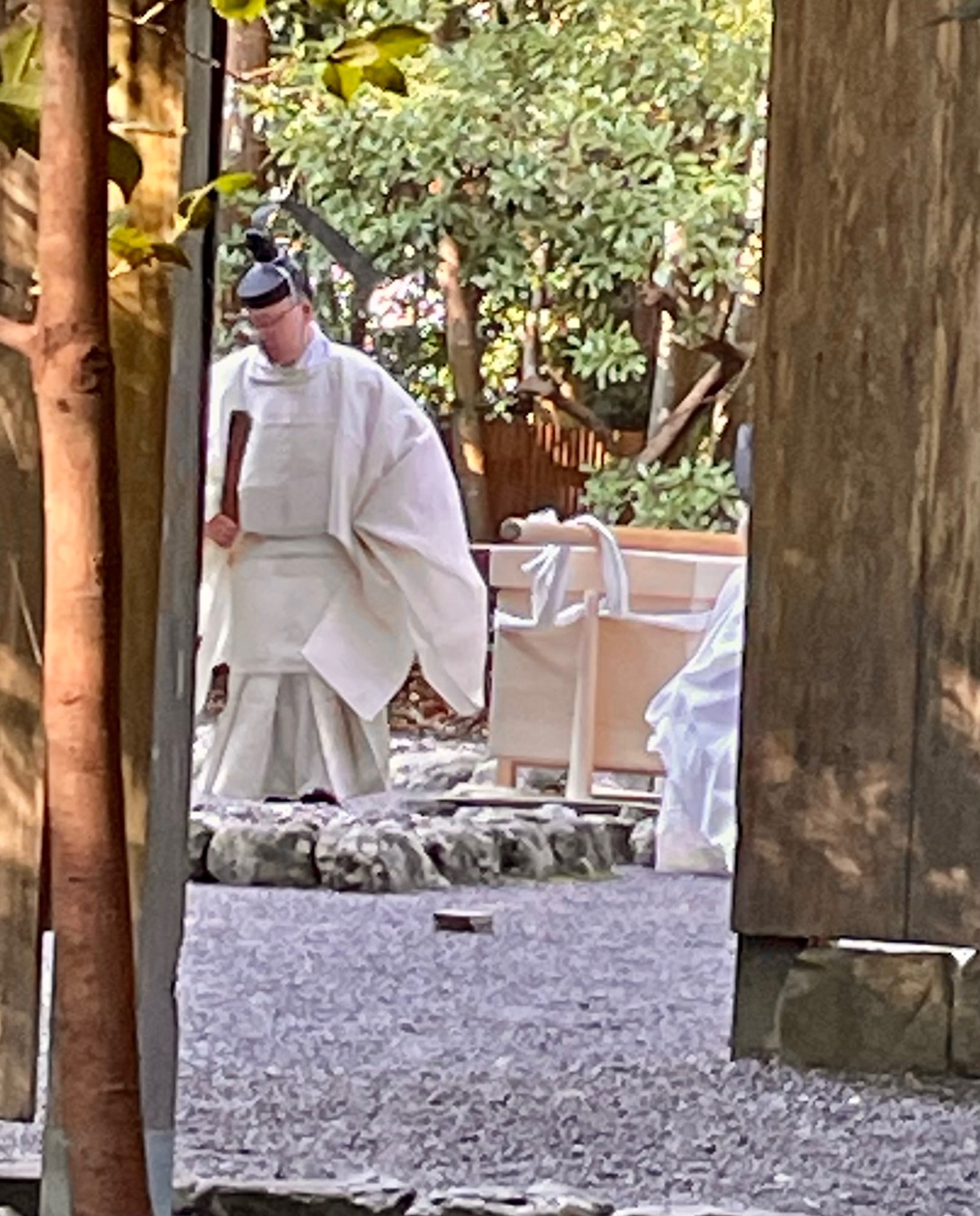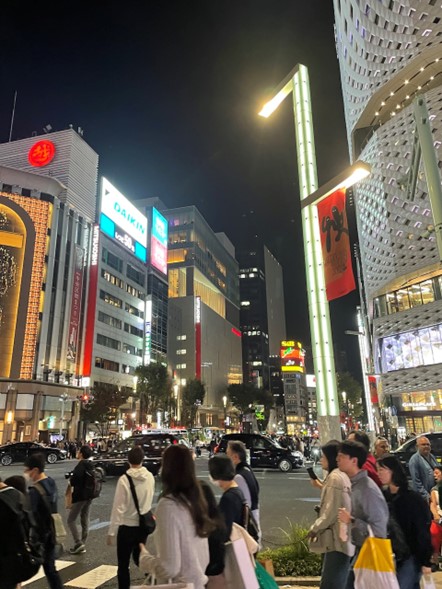0 = ∞ Zeroness Is Boundless Bounty!
We are all karma-born and -bound, possessing the triple poisons of desire, divisiveness, and delusion and living the triple paths (steps) of delusion, karma, and suffering. The delusion of self divides others, desiring others, resulting in suffering (dissatisfaction).
We act as karma-machines, driven by karma imbued with the triple poisons in self-survival strife since life started four billion years ago. Karma (action, habit, heredity) continues to reinforce the triple paths in time, space, scale, speed, and synergy.
Stilling this process lies in stilling the triple actions of our bodies, mouths, and minds (body, breathing, brain). The Buddha found that through still sitting, karma can be stilled; we can settle in nirvana (no wind, of karma), see the Dharma, and serve and save all from suffering.
Sitting meditation (za-zen) is the core practice of it. Zen leads to suññatā / śūnyatā (zeroness, of karma, self, life-death, etc.), which leads to boundless bounty; we can witness the Dharma world, like the Indra-net, in freedom and fulness, the wholly wholesome way and world.
April 19, 2024 C.E.
Note:
- Earth Day (April 22, 2024 C.E.) is a step closer to eco from ego, Dharma from karma, holiness (wholly wholesomeness) from sin (separated sickness), unity from division, etc. which can open the door to friendship (cf. Friend: Mitra, Mithra, Metteyya, Maitreya, Miroku, Mazda, Massiah, et al) of all, the common ideal of universal religions (cf. Buddhist four limitlessnesses or Brahma-vihāra, pure/supreme-abode of friendship, compassion, joy, and equanimity/emancipation/letting go: upekhā)
- The two refuges of self and Dharma are for the self to become Dharma, making oneself into boundless bounty as mentioned “I (Buddha seeing the morning star) with all beings on earth simultaneously attain the Way,” “In (possessing) nothing is (the storage of) the inexhaustible,” “in the falling away of the body and mind, realization of the universal truth,” “the entire world in ten directions in a clear crystal ball,” which is“the storage of light,” “the Buddha body,” “the Dharma body,” “the true human body,” etc.
- Karma is instilled with the triple poisons of desire, divisiveness, and delusion (of ego / mei: I / my). The Buddha said that all living beings are karma-birthed, -heirs, -owners, -machines, and -refuged. He clarified that there is no self-substance with self-sameness (permanent) and self-sovereignty (wishful) entities due to the Dharma (Truth / Law) of all dharmas (phenomena), Dependent Co-origination. We as karma-machines must change to the Dharma-refuged in order to change the world in suffering to that in holiness (wholly wholesome: harmonious, healthy, and happy).
- Dharma means 1. form (from d-harm: phenomenon) and 2. norm (from d-h-arm: norm: law operating through phenomena: ethic), and 3. the teaching of the law of all phenomena, that is, Dependent Co-origination (originally awakened on the origination of perception/consciousness depending on the sense organs and objects, but later applied to all phenomena, cf. note 5). This law is similar to the law of causality, now used by sciences, but deeper and wider, applied beyond objects – more on subjects and symbols – ideas, etc.).
- “The Dharma (Norm/Law/Truth/Ethic) of all dharmas (forms/phenomena/ truths/ethics)” is Dependent Co-origination, i.e., all phenomena are interdependently co-originated on limitless causes and conditions (similar to the Law of Causality, but deeper and wider – beyond conventions, conceptions, objects, etc.). This means that we are interrelated with other beings (other species, elements, stars, etc.), and relatives to each other, and that we must therefore live together harmoniously and strive to make a wholly wholesome world to become harmonious, health, and happy.
- The Indra-net, whose crystal balls on its knots reflect each other mutually and limitlessly in space and time, illustrates the Dharma of Dependent Co-origination well, showing that all phenomena are interdependently co-originated and co-originating among themselves. One (person or thing) is interconnected with others (persons or things) by elements (air, water, light, magnetism, chemicals, particles, sounds, colors, etc.), molecules, microorganisms, communications (words, arts, media, internet, etc.), actions (of viruses, plants, animals, humans, stars, etc.), etc. inside and outside, in space and time limitlessly.
- The life system is in a limitlessly interdependent and interrelated system throughout limitless space and time. If we can acknowledge and activate it, we can function as limitless life, light, liberation, and love, like the crystal balls of the Indra-net, making it holy (wholly wholesome), harmonious, healthy, and happy, calm and clear, collectively and continuously.
- Za-zen (sitting meditation) orders and stills body, breath, and brain (bodily, verbal, and mental) karmas. The Four Zen Stages illustrate the stilling process of mental (intellectual, emotional, and volitional) karmas, stilling contemplation/investigation, joy, and comfort, resulting in the reaching of equanimity (upekhā/upekṣā, lit. discarding), nirvana.
Please refer to parts 4 (nirvana) and 5 (zen) of “Why Buddhism Now”:
- Samādhi is essential to go beyond karma (especially its Triple Poisons of desire, divisiveness, and delusion) and settle in nirvana (by sitting still, stilling karma, settling in nirvana, seeing the Dharma/dharmas/Dharma world, and serving and saving all), in which true meditation and its prognosis (paññā/prajñā) can function.
- The solution of the global problematique, interrelated global problems such as global warming, mass extinction, nationalism, war, nuke, dictatorship, dogma, discrimination, prolusion, poverty, requires the global ethic (issued by the Parliament of the World’s Religions in Chicago in 1993 with more than seven thousand people from all religions and from all over the world attending), which is based on the Five Precepts (and the fundamental common elements in the Ten Precepts, the Ten Commandments, etc.).
.
0 = ∞ 空性は無限の豊驍である!
私達は皆、貪瞋痴三毒を所有し、惑業苦の三道(歩)を生きている、業生者、業縛者である。我の愚痴は他を分離し、他を貪り、苦(不満)の結果になる。
私達は、生命発生40億年以来、自己生存闘争での三毒の浸潤した業に駆られて、業機械として行動する。業(行動、習慣、遺伝)は時空、規模、速度、相乗効果中に強化され続ける。
この過程を静めるのは、身口意(身息脳)三業を静めることにある。仏陀は静坐を通じて業が静まることを発見した;私達は涅槃(無風、業の)に安住し、法を見、一切に奉仕し、一切を苦から救うことが出来る。
坐禅は禅の核心である。禅は空性(業、我、生死などのゼロであること)に導くが、これは無限の豊驍に導く;私達は自由と十全の中に帝釈網のような法界、全体健全な方法、世界を直証できる。
2024共通年4月20日
註:
1.地球日(2024共通年4月22日)はエゴからエコ、業から法、罪(分離病患)から聖(全体健全)、分割から統合などへの一歩接近であるが、これは普遍宗教の共通理想である一切友情(参考:トモ:Mitra, Mithra, Metteyya, Maitreya, Miroku, Mazda, Massiah, et al)への扉を開く(参考:仏教の慈:Maitrī:友情、悲、喜、捨:upekkhā/upekṣā:平静/解脱/放棄の四無量:四梵住:純粋/崇高住)。
2.自洲法洲の二洲は、「(仏陀が明星を見て)我と大地有情同事成道」、「無一物中無尽蔵」、「心身脱落現成公按」、「尽十方一顆明珠」、でありそれが「光明蔵」、「仏身」、「法身」、「真実人身」などであると言われるように自己を無限豊驍にして、自が法に成る為である。
3.業は貪瞋(エゴ/メイ:我/我所の)痴の三毒が植え込まれている。ブッダ(覚者)は一切衆生は業—誕生者、—相続者、—所有者、—機械、—依拠者であると言った。彼は、諸法(現象)の法(真理/倫理)である縁起の故に自己同一(永住)と自己主宰(意欲通り)の実態をもった自己物質は存在しないことを明らかにした。業—機械である私達は、苦しむ世界を聖(全体健全:調和、健康、幸福)なる世界に変える為には、法₋依拠者にならなければならない。
4.法(dharma)は 形態(form: d-harmより: 現象:真理)、2.規則(norm: d-h-armより:現象中の規則:倫理)、3.諸法の法、縁起(元来は感覚器官と感覚対象に依る知覚・意識の発生に覚醒したが後に一切現象に適用されたもの。註5参照)。この法則は、現今諸科学に用いられる、因果律と同様であるが、もっと深く広い-客体を越えて主体と観念などの象徴に適用される。
5.諸法(形態・現象)の法(規則・法則・真理・倫理)は縁起(因縁生起)、即ち、一切現象は無量の直接原因と間接条件により相依生起するということである(因果則に似ているがさらに深く広い-世俗、観念、対象などを超える)。これは私達が他者(多種、要素、星宿など)と相依関係にあることを意味し、相互に相対的であり、私達が調和、健康、幸福になる為には共に調和して生き、全体健全な世界を作る努力をしなければならないことを意味する。
6.帝釈網は、その結び目にある水晶の珠が時空中に相互に無限に反映し合うが、一切現象が共に生起し生起させる縁起の法を例示しています。一(人又は物)は(気・水・光・磁力・化学物質、素粒子・音・色等)の要素、分子、微生物、(言葉、芸術、メディア、インターネット等)の通信、(ウィルス、植物、動物、人間、星等)の行動などに依り内外、時空に無限に他(諸人又は諸物)と結びついている。
7.私達の生命組織は無限の時空を通じて縁起と関連の組織です。もし私達がそれを認知し実行するなら、私達は、帝釈網の水晶の珠のように、それを集団的に継続的に、聖(全体健全)なる調和、健康、幸福で、静かに明らかに、無限の生命、光明、自由、愛情として機能出来る。
8.坐禅(静坐瞑想)は身体・呼吸・頭脳(身口意)業を整え静止する。四禅は、尋求、伺候、喜悦、安楽を静め平静 (upekhā/upekṣā, 字義は捨離)・涅槃に到達する結果の心的(知性・感情・意欲)業を静止する過程を表示している。
「今何故仏教か?」の4(涅槃)と5(禅)を参照:
9.定(Samādhi)は業(特にその貪瞋痴の三毒)を超え、(静坐、止業、住涅槃、観法/諸法/法界、一切奉仕・救済し)涅槃に安住するのに必須であり、この中で本当の瞑想とその般若の智慧(paññā/prajñā)が働くことが出来る。
10.地球問題群、地球温暖化、大量絶滅、国家主義、戦争、核、ドクサイ、独断、差別、汚染、貧困の様な相互関連した地球諸問題、は(1993年シカゴで世界中から諸宗教の七千人を超える人々が集まった世界宗教会議により発出された宣言)地球倫理を必要とするが、これは(不殺、不盗、不偽、不淫、不飲酒の)五戒(と仏教他の十戒の基本的共通要素)に基づいている。インターアクション協議会は世界人務宣言の草案を作り国連が発出するように提出したが今に至るも棚上げされたままである。
.
.
.
.
.
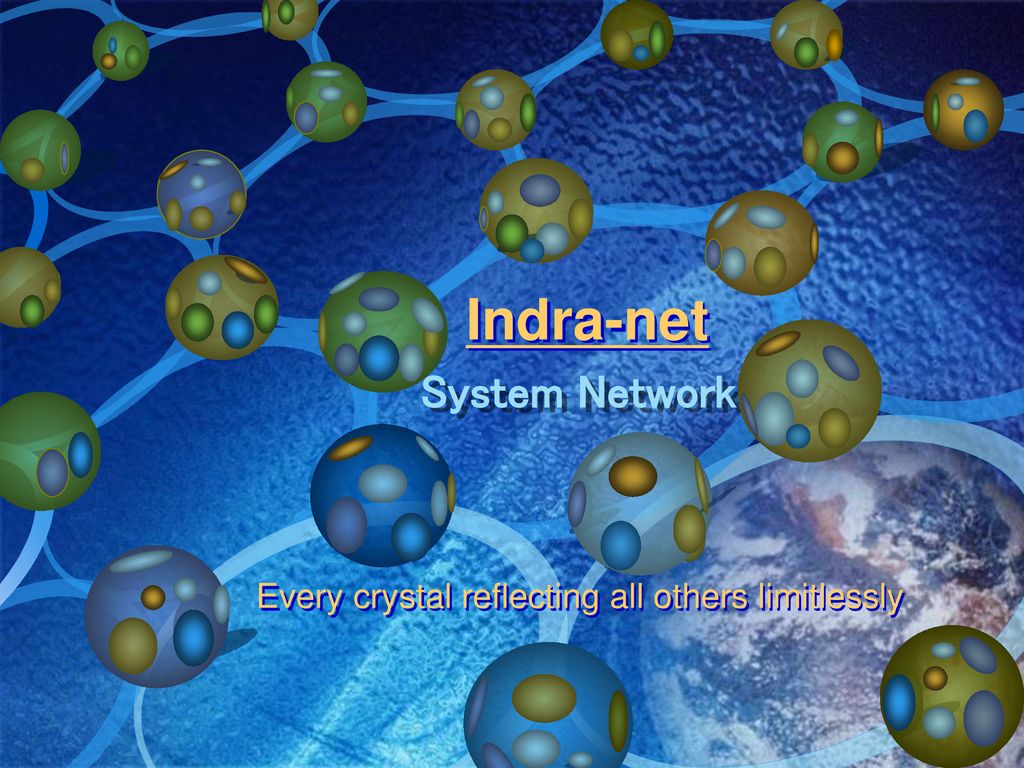
.
.
.

.
.
.

.
.
.

